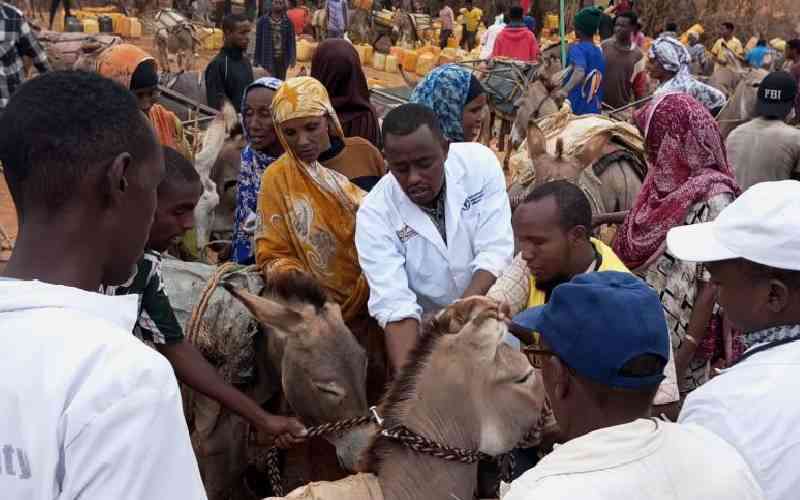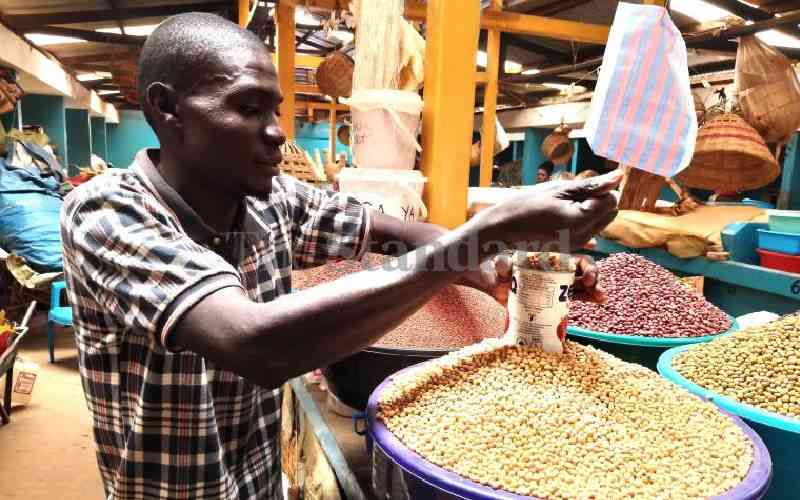Busia County is not only endowed with enormous natural resources but also strategically located at the border point linking Kenya to neighbouring Uganda.
Usually, both Malaba and Busia town border points are a busy with traders from Kenya and Uganda freely moving their merchandises without any restrictions. Nonetheless, with a poverty index of 67 per cent, Busia has been ranked amongst the poorest counties. Since the collapse of a cotton processing plant many farmers were left hopeless.
Most of them turned to traditional food crops mainly cassava, but this has not helped matters. Tobacco, rice, sorghum, finger millet, groundnuts, macademia and palm oil farming is among the activities locals have since embraced but on small scale, yet massive land lies unexploited.
The county has no operational industry at the moment. Mulwanda Cotton ginnery in Funyula, Nambale and Malakisi cotton ginneries collapsed decades ago. Plans are under way to revive Mulwanda.
The current efforts to construct a sugarcane factory at Busibwabo has received resistance and support in the equal measure.
According to the County executive for Agriculture and Animal Resources Moses Mwanje, agriculture is the region economic mainstay. About Sh200 million was allocated in the 2014-15 financial year to agriculture docket an increase from last year of Sh141million.
“Over 50, 000 farmers have received banana tubers across the county and this will help us achieve our goal of increasing food supply to over 50 per cent in the next two years,” Mwanje says.
However, some residents fault the county leadership on the infrastructure problem. Boda boda riders, who are popular in the county where the transport mode started, claim devolution has had little impact on their businesses.
Poor road network has affected transport business.
“We have to have to compete for space with heavy commercial trucks which results in accidents,” says Samwel Barasa, a boda boda operator.
The operators are forced to part with at least Sh300 monthly levy paid to the County government.
On the common snarl-up border points, Teso North MP Arthur Odera says structures must be developed to ensure effective clearance system and more revenue.
“The County must create a parking lot where trucks can be parking at a fee to generate revenue for the county government,” notes Odera.
The border point could create job opportunities, promote trade and generate revenue.
The National Cross Border Traders Association is also complaining of frequent power failures and poor organisation at Malaba and Busia border points, which they say costs them heavily.
Stay informed. Subscribe to our newsletter
“We want the county government to erect some sheds where trucks can take shelter to avert losses caused by rains,” says chairman David Erullu.
At least 1, 000 trucks gain access to Kenya and Uganda through Malaba border every day compared to 300 trucks using Busia border entrance.
Governor Sospeter Ojaamong assures traders that a 14-hectare piece of land has been bought to construct a trucks parking lot.
Farmers are also calling for help to help market their produce. According to Christopher Gunyi, an official with the Magombe Rice Cooperative Society in Bunyala, farmers lack storage facilities, thus incurring huge costs of production.
“We have over 10, 000 bags of rice in our stores translating to Sh43 million which could go to waste if we do sell them soon,” says Gunyi.
“Initially we had only 534 hectares but we have since expanded our acreage to 1,800 hectares hence need for a large storage facility for the produce,” he notes.
Unlike farmers in Mwea rice scheme who use gravity water to irrigate their farms, the growers largely rely on automated pumps to get water for irrigation.
This is more expensive and resource-demanding.
“We call upon the County government to help by putting up raised water reservoir where water for irrigation can be preserved and let to flow freely into the farms during power blackouts,” he says.
Mary Ochiambo, a businesswoman says the county has a huge potential to be a middle income economy through fish production because of its proximity to shores of Lake Victoria.
“We have embarked on aqua-culture to market fish and Sh5.5 million towards fish feed formulation for the purpose of fingerling production. We want to ensure every ward has a hatchery. Sh9.7million has also been channeled to improve fish handling centres at the two border points,’’ says Mwanje.
Lack of water too is a major setback. Only 46 per cent of residents in Busia County have access to piped water.
Bernard Yaite, County Executive for Water, Environment and Natural Resources says the department has cleared pending Sh9 million electricity bills.
“This year we got an increment Sh403 million, we have done water points mapping. 80 per cent of our budget will go to development. 11 shallow wells have been rehabilitated,’’ he says.
On health, the county set aside Sh1.2 billion, a lion’s share in this financial year. Seven ambulances have been hired at a tune of Sh53 million to upscale service delivery in the seven sub-counties.
The department of public works, roads and transport says works have been carried on some 245 Kilometre of roads under the, ‘One road per ward initiative’ that covered 35 roads in all the 35 wards. Mr Ojaamong is confident his team will deliver despite the many challenges.
“We have installed street lights in Busia and Malaba towns. Road works is still on-going although the rains are affecting us but I am optimistic we shall complete roads earmarked,’’ noted the governor.
Senator Amos Wako concurs that the county is on thr ight track.
“..our main focus is development not politicking. We meet every month to benchmark and seek best approaches in moving forward as a county,’’ he says.
 The Standard Group Plc is a
multi-media organization with investments in media platforms spanning newspaper
print operations, television, radio broadcasting, digital and online services. The
Standard Group is recognized as a leading multi-media house in Kenya with a key
influence in matters of national and international interest.
The Standard Group Plc is a
multi-media organization with investments in media platforms spanning newspaper
print operations, television, radio broadcasting, digital and online services. The
Standard Group is recognized as a leading multi-media house in Kenya with a key
influence in matters of national and international interest.
 The Standard Group Plc is a
multi-media organization with investments in media platforms spanning newspaper
print operations, television, radio broadcasting, digital and online services. The
Standard Group is recognized as a leading multi-media house in Kenya with a key
influence in matters of national and international interest.
The Standard Group Plc is a
multi-media organization with investments in media platforms spanning newspaper
print operations, television, radio broadcasting, digital and online services. The
Standard Group is recognized as a leading multi-media house in Kenya with a key
influence in matters of national and international interest.








